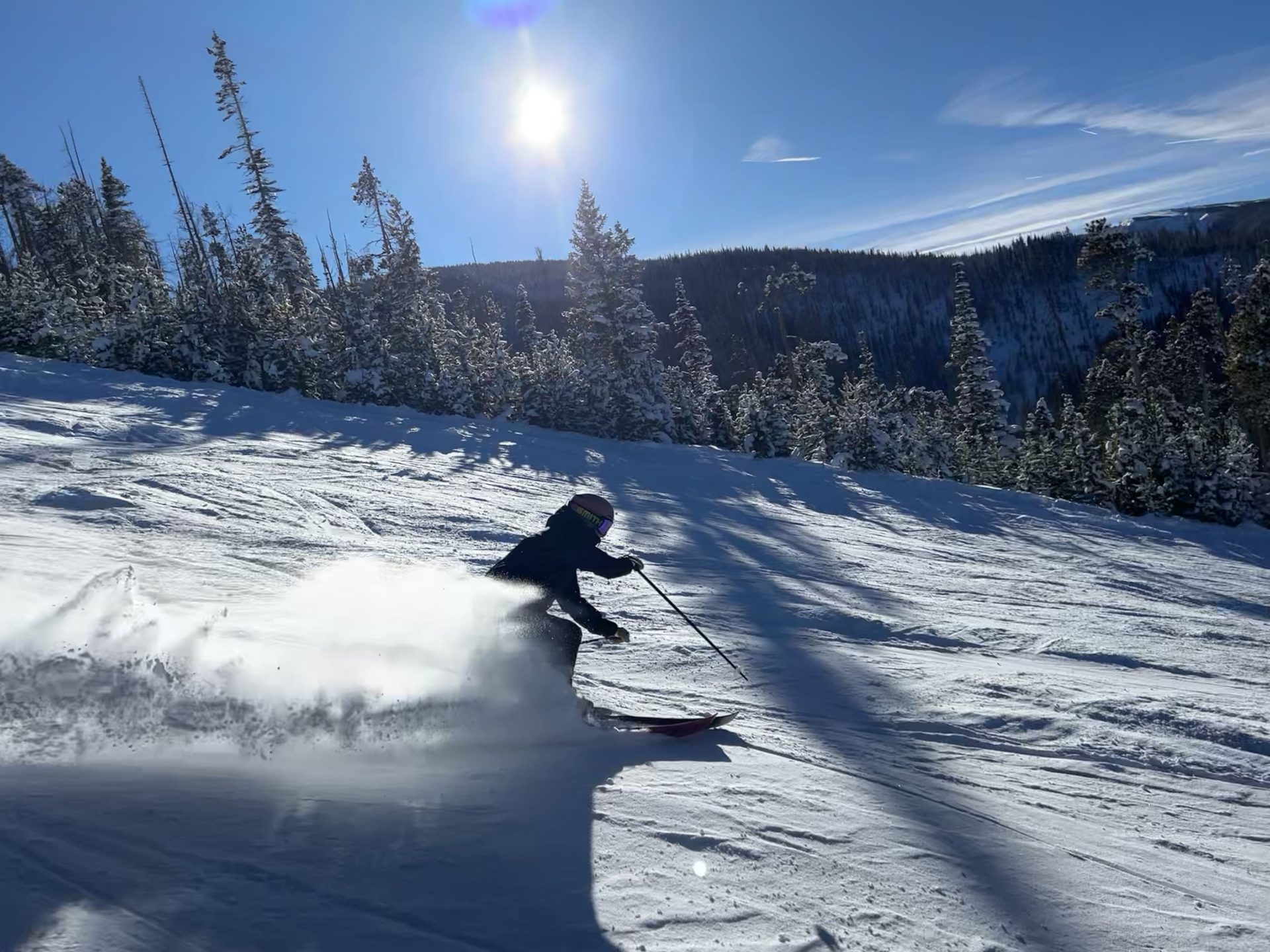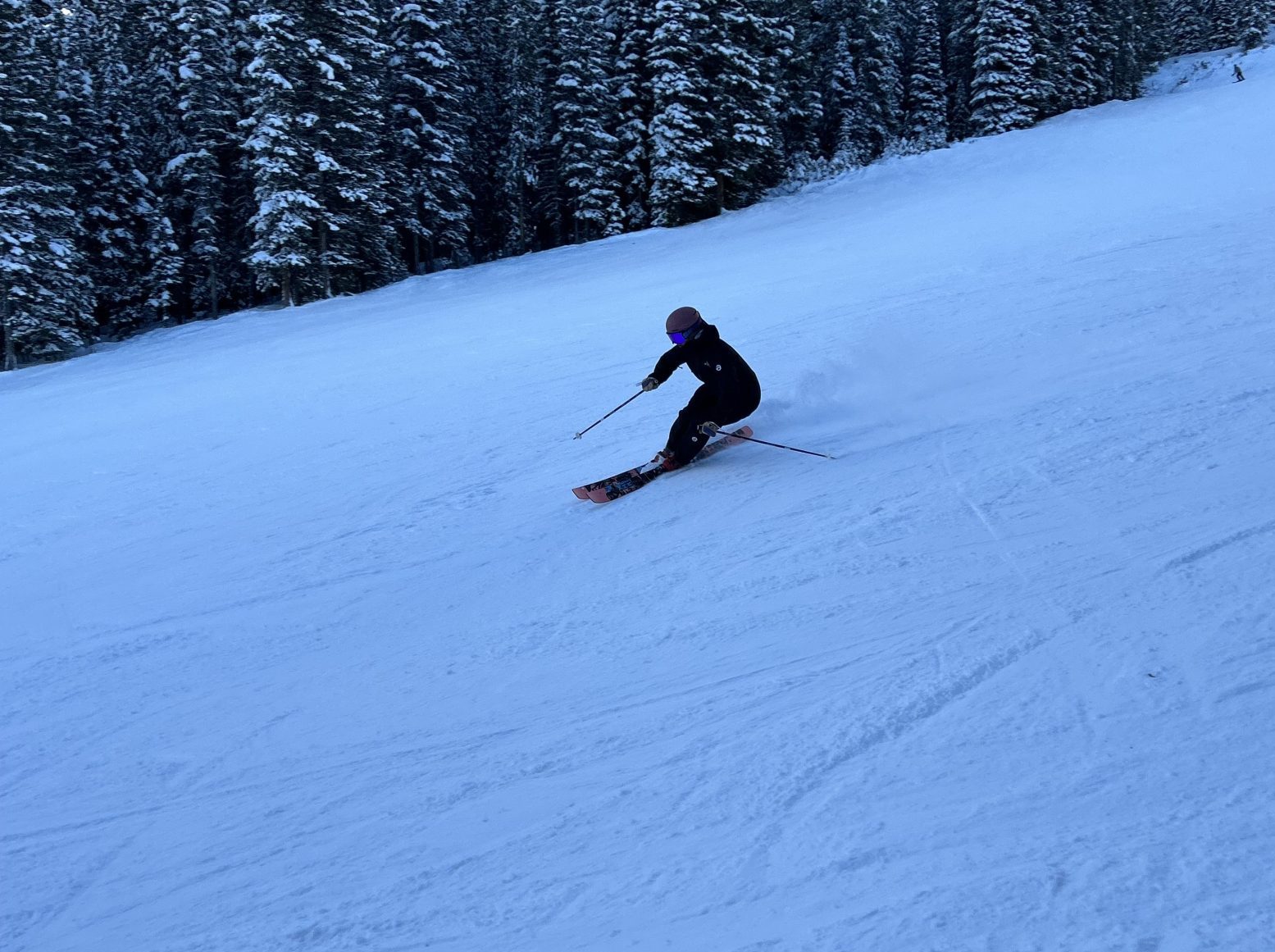
Have you ever wanted to ski like an Olympian? This December, I set out on a seven-day quest – attempting to use Carv digital coaching and technology to coach me into as good of a skier as legendary Olympian Ted Ligety.
With snowpack below average this season, most days are spent carving it up on the groomers. There’s no better time to work on improving your technique. When a limited number of runs are open, days on the mountain can get repetitive or even boring. But with Carv digital coaching in your ear as your personal ski coach scoring and providing feedback after every turn, it turns each lap into a game. You can compete with yourself, your friends, or even Ted Ligety.

Throughout the past seven days of skiing, I spent more time on groomers than in past years. To me, a groomer gets you to the next run, whether bumps, trees, or even the chairlift. However, skiing with Carv has turned groomers into a new, exciting challenge.
What makes skiing so special is there’s always room for improvement. No matter how long you’ve been skiing or what kind of terrain you like, there are always goals to set that you can work on each season. That’s where Carv comes in. Carv is the ultimate ski coach, with instant advice from world-class coaches directly in your ear as you ride up the lift. You can immediately put that feedback into action on your next lap down. If you’re competitive, like me, it turns into quite the game. Constantly analyzing and working on your technique to up your Ski:IQ.
- Related: Gear Review: Carv Digital Ski Coach – Your Own Private Instructor for a Fraction of the Price
Carv is state-of-the-art technology featuring 36 pressure sensors (72 total), all wrapped up in a thin footbed. Attached to the footbed is a small battery pack that easily clips onto your power strap. The footbed itself sits underneath the liner on your shell’s bootboard. It’s 3mm thick – so small you’ll hardly feel it there.


These sensors are incredibly sensitive and send real-time data to the app on your phone, which scores and organizes the raw data. Within the app, you’ll find a variety of instructional programs, training videos, and workouts, all cherry-picked to help you maximize progression based on your Ski:IQ. There’s even a global leaderboard – see how you rank with friends as well as other users all across the globe.
The device is so sensitive it’ll calculate everything. Each little movement is accounted for right down to your edge angle and the G-force you’re experiencing throughout a turn. These metrics are new for this season; the higher those scores, the more you’ll feel like an Olympian.

The data collected during a segment is separated into four categories of basic skiing fundamentals: balance, edging, rotation, and pressure. Each category has multiple metrics, 12 in total, that can be improved upon and increase your score by perfecting your style and technique. Then, this is all compiled and scored under a single Ski:IQ. The higher your Ski:IQ, the better your technique.
My first day with the device was a cold, icy day at Loveland Ski Area in Colorado at the beginning of December. I grew up on skis and have been skiing since I could walk. However, I wasn’t sure what to expect. As a “ski school dropout,” I’ve never experienced professional coaching.
Initially, I scored a Ski:IQ of 130—only 37 points off Ted Ligety’s. I could catch that in no time – “Ligety-split”! Just a few more points to level up, or so I thought. I spent the next six days working on early and progressive edging, attempting to “carve like a pro.” But alas, I am not an Olympian. I finished my seven-day challenge and plateaued at a Ski:IQ of 140. But hey, I’ve never had more fun skiing groomers!

Not only has Carv instilled a new confidence in how I’m engaging my edges and driving through the front of my boots, but it also puts you in tune with your gear. As a self-proclaimed gear nerd, I used various skis from my quiver while “competing.” Surprisingly, my favorite carving ski isn’t really a carving ski at all. Now, not only can I conquer any slope fully engaging my edges, but I also feel I know each of my skis better.
While I spent this week-long challenge skiing on groomers, these techniques and coaching tips can be applied to any terrain. From groomers, bumps, and trees to big mountain terrain, the fundamentals of skiing are all the same: balance, edging, rotation, and pressure. As the season ramps up, I’m looking forward to transferring these skills and new knowledge to more technical terrain, dialing in, and perfecting my personal style and technique – even if it’s not quite Olympic quality. Go get ’em, Tiger!





